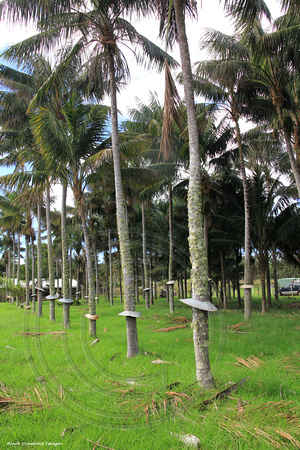lt;bgt;Copyright - All Rights Reserved - Black Diamond Imageslt;/bgt;br/br/Family ; Arecaceaebr/br/Howea forsteriana in not endemic to Norfolk Island, rather it hails from Norfolks southern neighbour, Lord Howe Island and was effectively discovered by the director of the Royal Sydney Botanic gardens, Charles Moore in 1869. A resident of Lord Howe Island, TB Wilson, passed via Norfolk Island in 1881 on his way to New Zealand and delivered some Howea forsteriana seed in repayment for Araucaria heterophylla seed he had been given on a previous visit to Norfolk Island in 1878. This exchange was the first recorded exchange of seed to Norfolk Island.br/Gradually more and more trees were planted, mainly around homes. The shift to plantation trees came after Ivens (Pullis) Nobbs noticed kentia Palms being used for decorative purposes in luxurious hotels in North Africa where he had served with the Australian Armed Forces during WW2.br/Nobbs on his return from the war began growing trees in large numbers from local seed at first but soon travelled to Lord Howe Island to exchange Norfolk Island Pine seed for Kentia Palm seed.br/Four generations of Nobbs family have grown Kentia for its seeds and its seedlings with seed and plants shipped around the world. Other families also began growing plantations following the Nobbs family success. Norfolk Island established a proud reputation for the quality of its seed crops but that has not been enough to maintain Norfolks competitive edge. Large nurseries in Europe,USA and elsewhere are now growing Kentia Palms under climate controlled conditions and have gradually eroded Norfolk Islands share of the market to the point where the industry on Norfolk Island today is barely viable. Lord Howe Islands industry has similarly suffered. a href="
http://httphttp://www.kentiapalms.com/norfolkisland.html://"; target="_blank"REF/a


